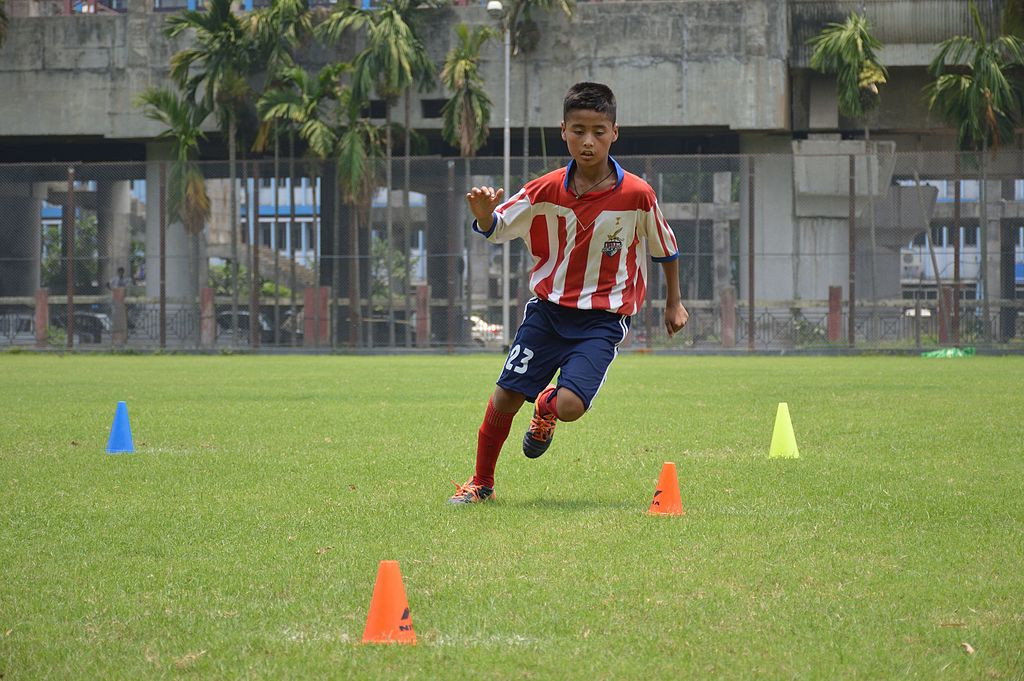How Can I Improve My Speed as a Grassroots Footballer?

Speed is one of grassroots football’s great levellers. It’s an attribute that can nullify a range of technical and tactical strengths if it’s used at the right times in the right ways.
Unfortunately, speed is largely a naturally gifted trait. In simple terms, you’re either born with raw pace or you have to work at it. And even if you are naturally quick, there’s often room for improvement.
The good news is that there are several things you can do to improve your speed as a grassroots footballer. It will take the right speed and agility football equipment, hard work, practice and dedication. But with the right approach, you should be able to fulfil your potential over time.
Strength Training
Strength training is crucial for improving leg strength — a crucial aspect for athletes aiming to enhance performance and prevent injuries. There are a few simple exercises you can perform to help you develop in this regard.
Squats
Squats are a fundamental compound exercise targeting multiple muscle groups, including the quadriceps, hamstrings, glutes, and lower back. Variations like back squats, front squats, and goblet squats offer versatility in targeting different muscle fibres and movement patterns.
Lunges
Lunges engage the quadriceps, hamstrings, glutes, and calves while also improving balance and coordination. Forward lunges, reverse lunges, walking lunges, and lateral lunges can be performed with body weight, dumbbells, or barbells to increase resistance and challenge stability.
Deadlifts
Deadlifts primarily target the posterior chain, including the hamstrings, glutes, and lower back. Conventional deadlifts, sumo deadlifts, and Romanian deadlifts strengthen the muscles responsible for hip extension and improve overall lower body power and stability.
Parachute Running
Use the resistance of a parachute-style aid to demand more from your legs as you run. Once you get used to running with this extra drag, running at speed unhindered will feel easier and more natural.
Work on Explosiveness and Acceleration
Those first two or three seconds of acceleration can make a huge difference during a competitive match. You’ll be pleased to know that improving this area of your game can be achieved with a few simple exercises.
Box Jumps
Box jumps involve explosively jumping onto a raised platform, and then landing softly. This exercise targets fast-twitch muscle fibres, enhancing explosive power and vertical jump height.
Explosive Push-Ups
Explosive push-ups involve pushing off the ground with maximum force, aiming to achieve air time before landing back into the push-up position. This variation of the push-up strengthens the chest, shoulders, and triceps for explosive upper-body strength.
Jump Squats
Jump squats involve explosively jumping into the air from a squat position. This exercise targets the lower body muscles, including the quadriceps, hamstrings and glutes, while also improving coordination and agility.
Tuck Jumps
Tuck jumps require explosively jumping vertically while simultaneously bringing the knees towards the chest. This exercise enhances lower body power and coordination, activating fast-twitch muscle fibres for improved explosiveness.
Agility Ladder Running
The ability to move and accelerate quickly while maintaining accurate foot positioning can help you beat opponents and get out of tricky situations. To practice this ability, lay a speed or agility ladder on the ground and run over the rungs while trying not to touch them. Work on improving your technique and times as you progress.
Improve Your Running Technique
If you can work on a more efficient running technique, you might be able to increase your top speed and reduce the risk of injuries.
Arm Swing
Maintain relaxed arms with a slight bend at the elbow. Swing them naturally — while avoiding crossing the body's midline — and keep them close to the torso. Proper arm swing helps your balance, rhythm and propulsion.
Foot Strike
Aim for a midfoot or forefoot strike, ensuring the foot lands directly beneath the centre of your body. This distributes impact forces more evenly — reducing the stress on your joints and muscles. Avoid overstriding, which can lead to inefficient braking forces.
Body Posture
Maintain an upright posture with a slight forward lean from the ankles. Engage the core muscles to stabilise the torso and pelvis. Keep your head up, eyes forward and shoulders relaxed to promote efficient breathing and reduce tension in your upper body.
Create a Training Schedule — And Be Consistent!
Maintaining consistency in speed training is crucial for delivering long-term improvements to your acceleration, top speed and overall performance on the football pitch. Create an approach to speed training that works for you, and stick to it!
Establish a Training Schedule
Set aside specific days and times each week for speed training sessions. Consistency is key, so stick to your schedule even when faced with busy days or distractions.
Keep Progressing
Gradually increase the intensity, duration or complexity of your speed training exercises over time. This progressive overload can drive continual improvements to your speed and agility.
Listen to Your Body
Pay attention to signs of fatigue, soreness or injury during training. Adjust your intensity or volume accordingly to prevent overtraining and promote recovery.
Goal Setting
Set specific, measurable and achievable goals for your speed training. Whether it's improving sprint times, agility drills or overall speed, having clear objectives can help maintain motivation and track progress.
Apply These Improvements to Your Game
If you want to convert all this hard work to the football pitch, you’ll need to make a conscious effort to do so. Unless you apply these techniques to competitive action, all your efforts will be for nothing. But with determination and the right attitude, you should be able to become faster and stronger on the pitch within a few months.

